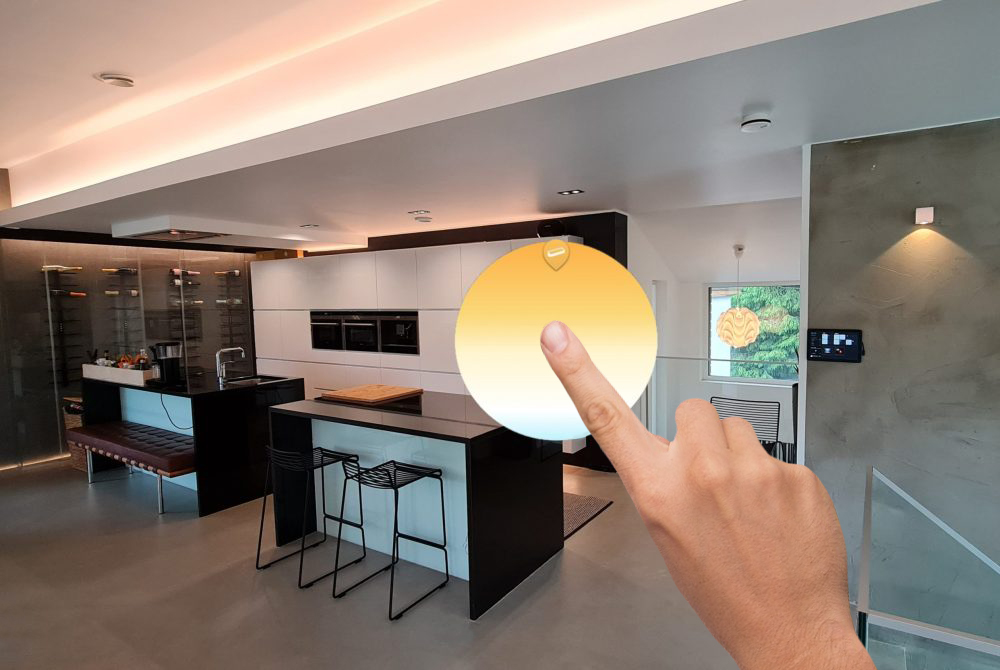Today, more and more people are interested in smart home technology, and one of the most important of these is smart lighting. In this article, we will explain the benefits of smart lighting, what it is, how it works and the advantages it offers in the home, public spaces and industry.
What is smart lighting?
Technological development
Smart lighting is a lighting technology that uses IoT (Internet of Things) technology and wireless connectivity to control and automate lighting. This makes it possible to adapt lighting to different situations and needs, such as energy saving, security or creating a specific atmosphere.
The different components
Smart lighting is based on LED lamps with built-in wireless connectivity, such as WiFi or Bluetooth. Smart lights can be individual lamps, lights or LED strip lights, and can be controlled by a variety of devices such as smartphones, tablets or voice control devices like Amazon Echo or Google Home.
What’s the point of smart lighting, really?
Energy savings and convenience. Here we tell you even more about the benefits.
What are the benefits of smart lighting? Here are the TOP6:
- Energy saving
- Ease of use
- Security
- Creating an atmosphere
- Environmental friendliness
- Energy saving
Energy saving
One of the biggest benefits of smart lighting is energy savings. Thanks to LED lamps, smart lighting consumes significantly less energy than traditional light bulbs. You can also automate the lighting so that it turns off automatically when there’s no movement in the room or when it’s light enough outside. This reduces your electricity bill and at the same time benefits the environment.

Ease of use
Smart lighting offers excellent user convenience, as you can control the lighting remotely, for example with your smartphone. You can adjust the intensity, colour and mood of the lighting to suit the situation. You can also schedule lights to come on and go off at specific times, which can help you wake up in the morning, for example, or make your home safer when you’re away.
Security
Smart lighting can improve home security in many ways. For example, you can set the lights to turn on using motion sensors, which can repel potential intruders. You can also time the lights to come on and go off, so your home looks lived in even when you’re away. Smart systems often come with cameras.
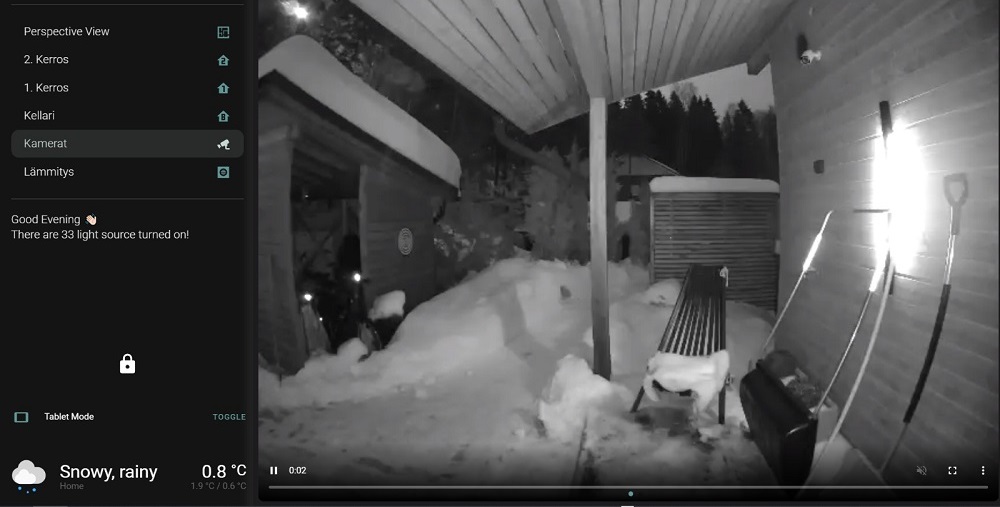
Creating an atmosphere
With smart lighting, you can create different atmospheres in your home or office. The colour, brightness and intensity of the lighting can be adjusted as required, so you can create a peaceful atmosphere for relaxation or an energetic mood for parties and dinners, for example.
Environmental friendliness
As mentioned earlier, smart lighting is an environmentally friendly alternative to conventional lighting. The energy efficiency and long life of LED lamps reduce energy consumption and waste. And with automation and remote control, you can ensure that lights are only on when they’re really needed, and in some systems you can even see energy consumption.
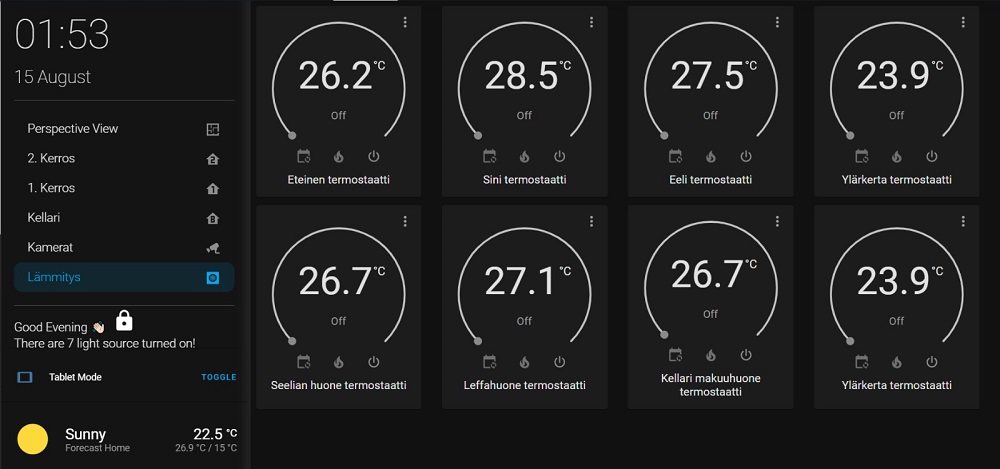
Applications of smart lighting
Smart lighting can be used practically everywhere, from the home to the office to industry.
Smart lighting at home
Smart lighting is a very popular smart home solution. It allows you to create a comfortable and safe environment for you and your family. Smart lighting can also help you save energy and money in the long run, and by customizing it to your liking, you can automate it for your family’s life. With automation, you won’t even need buttons.
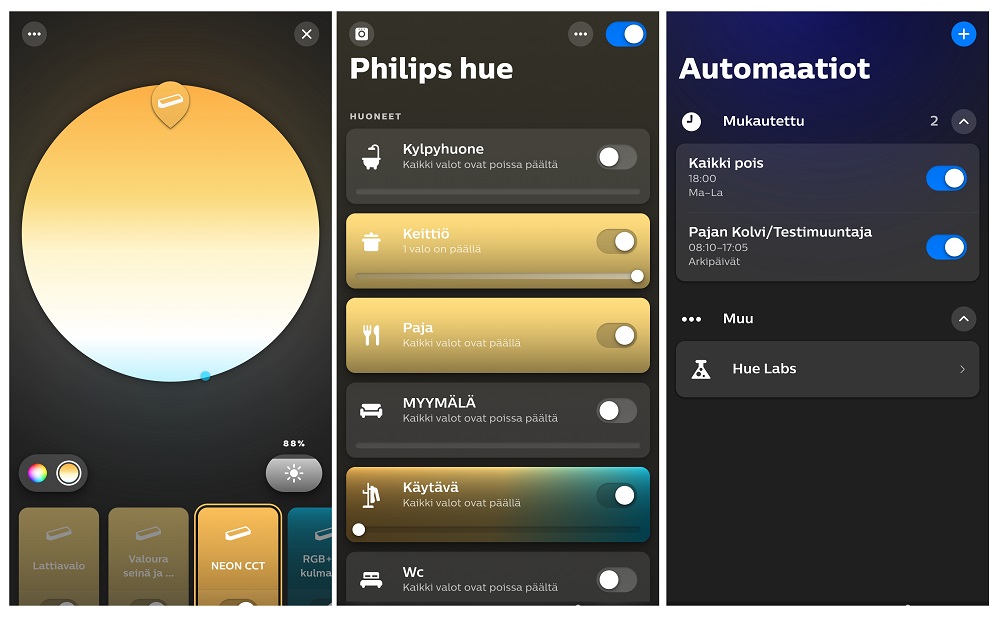
Office smart lighting
In office spaces, smart lighting can bring improvements in employee well-being and working conditions. For example, lighting at workstations can be adjusted to the optimum level for each worker’s needs and preferences, which can improve work efficiency and reduce eye strain, as well as automatically switching off lighting when workers go home.
Public spaces
In public spaces such as hotels, restaurants and shopping centres, smart lighting can improve customer comfort and safety. You can change the colour of the lighting according to the festive season. In addition, energy savings are particularly important in large buildings, where energy consumption for lighting can be significant.
Industry and smart lighting
In industrial plants, smart lighting can improve safety at work and increase production efficiency. For example, automating lighting can reduce accidents and adjusting lights can help workers to concentrate better on their work, as well as automatically turning off lights when workers go home.
Installation and commissioning of smart lighting
DIY solutions
If you are interested in installing smart lighting yourself, there are many DIY solutions on the market to suit different needs and budgets. For example, you can start by buying one or more smart bulbs and downloading an app on your smartphone to control the lights. Most smart lighting systems require a HUB/Hub, which allows you to access the devices with your mobile app.
What are intelligent lighting systems?
Use of wireless systems
Intelligent lighting systems often use systems that allow lighting to be controlled without cables. This allows for flexible installation and easy expansion of systems. The hub, mentioned earlier, is the intelligent lighting centre that talks to the devices in the system. Your app will then connect to this hub. The most popular smart home technology is Zigbee.
Intelligent lighting software
What are the benefits of smart lighting without software? Today, lighting systems use a variety of software to control and adjust lighting as needed. The software can also be used, for example, to time lighting or automatically adjust from cold to warm according to the sun’s movements, supporting the human internal clock. The most well-known software are Philips HUE and Google Home or Amazon Alexa. Homeassistant has become very popular among enthusiasts, as it allows you to coordinate all the different systems.
Presence sensor
A presence sensor allows you to control the lighting according to the presence of a person. When the presence sensor detects a person in the room, the lights will automatically turn on. This allows energy saving and safe movement in a dark room. You can usually program a motion sensor to turn on any other device or light fitting.
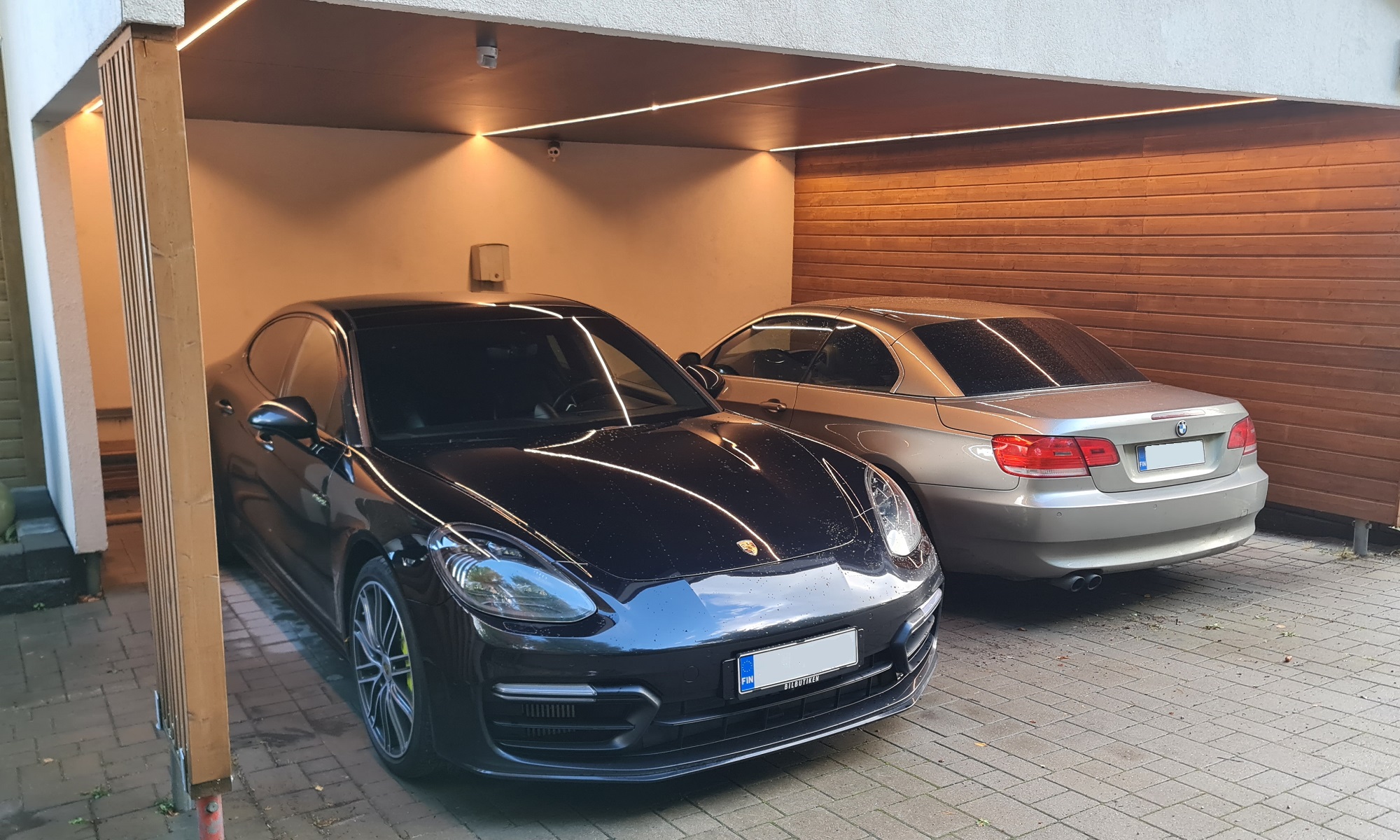
How does smart lighting affect energy efficiency?
Intelligent lighting controls
Intelligent lighting controls allow you to control lighting according to your needs. For example, when there is no one in the room, the lights can be turned off. Similarly, when there is enough natural light in the room, the lights can be turned off or dimmed. This enables energy savings and energy-efficient operation. So the simplest and most intelligent lighting control is by motion sensors or dimmer switches
Efficiency of lights
The efficiency of lighting also affects energy efficiency. Smart lighting systems usually use LEDs, which are more energy-efficient than conventional lighting. The use of lights reduces energy consumption and improves environmental friendliness.
Making the most of daylight
Intelligent lighting systems enable the use of daylight for lighting control. When there is enough natural light in the room, the lighting can be adjusted to a lower level or switched off completely. This allows energy savings and more environmentally friendly operation.
How does smart lighting affect comfort and convenience?
Remote control
Smart lighting systems can also be controlled by remote control, so that the lighting can be adjusted as required, for example from a button on the desk… For example, when you want to create a relaxing atmosphere in a room, the lights can be dimmed. Similarly, if you want to create a cosy atmosphere or work in a room, the lights can be adjusted to a brighter level.
Colour temperature control
Intelligent lighting systems also allow you to adjust the colour temperature of the lighting. Adjusting the colour temperature allows you to create different moods, for example using brighter light for work and warmer or dimmer light for relaxation. Homeassistant users are provided with automation that automatically changes the light temperature according to the human Circadian. Cool in the morning and warm in the evening, and dimmer. The plugin can be found on Github
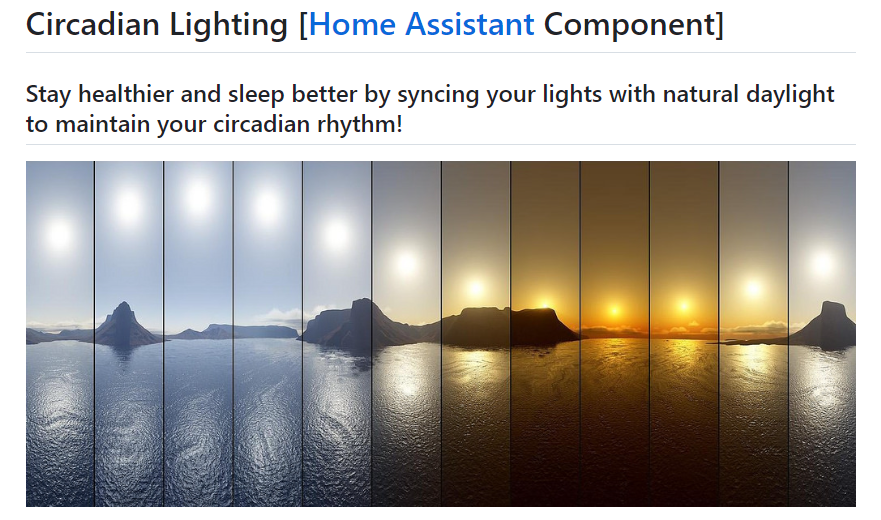
Dimming of lights
The possibility of dimming the lights allows you to increase the comfort of use in different situations. For example, when watching a film in a room, the lights can be dimmed so that the lighting does not interfere with the film.
Frequently asked questions
What is smart lighting?
Intelligent lighting refers to lighting technology that enables intelligent and automated control of lighting.
Why use smart lighting?
Intelligent lighting enables energy-efficient and environmentally friendly operation, as well as a safer and more comfortable user experience.
Where can smart lighting be used?
Smart lighting can be used in the home, office, industry and public spaces.
What are the benefits of smart lighting?
Intelligent lighting enables energy-efficient and environmentally friendly operation, a safer and more comfortable user experience and control of lighting for different needs.
What are intelligent lighting systems?
Intelligent lighting systems use a variety of sensors and software to enable intelligent and automated lighting control. These systems include wireless(zigbee) or wired(DALI) systems, software management and presence detection.
Conclusions
Intelligent lighting is a technology that enables intelligent and automated control of lighting. Intelligent lighting systems use a variety of sensors and software to optimise lighting for different applications. Intelligent lighting systems are energy-efficient and environmentally friendly solutions that provide a safer and more comfortable user experience.
Led lighting expert
LedStore has been a specialist in Led lighting since 2010. We have our own product design, so our products are technologically state-of-the-art.
We focus on light colour temperature controlled and high colour rendering index lights. We do around 500 lighting designs in a year.
We offer a service of custom made led strips, i.e. custom made led light strips in profile. Also installed.
Remember that we are always ready to offer our help to you along the way, by email (myynti@ledstore.fi) and by phone (045 251 4510). As always, feel free to share photos of your own projects on social media at ledstore.fi at Instagram and ledstore.fi at Meta. We love to see the cool things done by our LEDs, and it also helps to provide inspiration for those who are not sure about the power and awesomeness of LEDs. Did you know that we already have over 3500 pictures of our LED installations in our Gallery!
Photo of Led lightsGallery:
Product gallery: Pictures of products in different installation locations
Indirect light: Indirect light in different spaces
Room-specific: Light in different rooms
References: Complete houses that have been photographed

